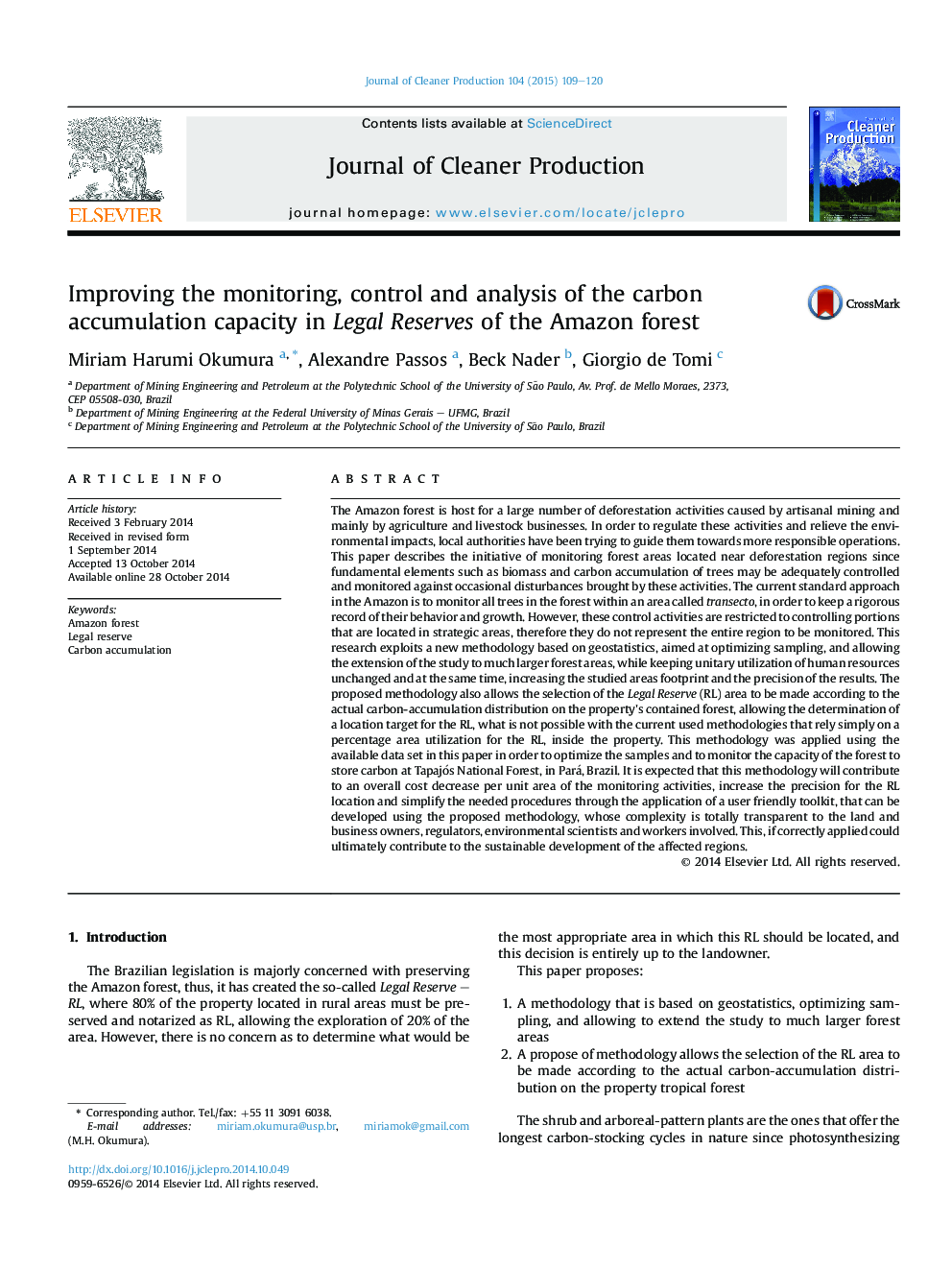| Article ID | Journal | Published Year | Pages | File Type |
|---|---|---|---|---|
| 8103352 | Journal of Cleaner Production | 2015 | 12 Pages |
Abstract
The Amazon forest is host for a large number of deforestation activities caused by artisanal mining and mainly by agriculture and livestock businesses. In order to regulate these activities and relieve the environmental impacts, local authorities have been trying to guide them towards more responsible operations. This paper describes the initiative of monitoring forest areas located near deforestation regions since fundamental elements such as biomass and carbon accumulation of trees may be adequately controlled and monitored against occasional disturbances brought by these activities. The current standard approach in the Amazon is to monitor all trees in the forest within an area called transecto, in order to keep a rigorous record of their behavior and growth. However, these control activities are restricted to controlling portions that are located in strategic areas, therefore they do not represent the entire region to be monitored. This research exploits a new methodology based on geostatistics, aimed at optimizing sampling, and allowing the extension of the study to much larger forest areas, while keeping unitary utilization of human resources unchanged and at the same time, increasing the studied areas footprint and the precision of the results. The proposed methodology also allows the selection of the Legal Reserve (RL) area to be made according to the actual carbon-accumulation distribution on the property's contained forest, allowing the determination of a location target for the RL, what is not possible with the current used methodologies that rely simply on a percentage area utilization for the RL, inside the property. This methodology was applied using the available data set in this paper in order to optimize the samples and to monitor the capacity of the forest to store carbon at Tapajós National Forest, in Pará, Brazil. It is expected that this methodology will contribute to an overall cost decrease per unit area of the monitoring activities, increase the precision for the RL location and simplify the needed procedures through the application of a user friendly toolkit, that can be developed using the proposed methodology, whose complexity is totally transparent to the land and business owners, regulators, environmental scientists and workers involved. This, if correctly applied could ultimately contribute to the sustainable development of the affected regions.
Keywords
Related Topics
Physical Sciences and Engineering
Energy
Renewable Energy, Sustainability and the Environment
Authors
Miriam Harumi Okumura, Alexandre Passos, Beck Nader, Giorgio de Tomi,
